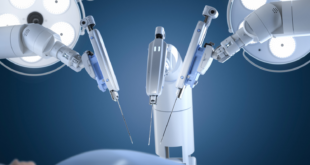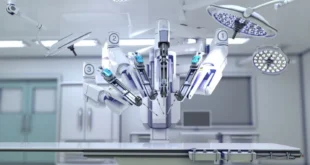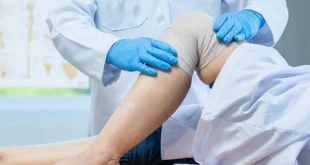Orthopedic braces are medical devices which provide support, stability and protection to body parts especially the musculoskeletal system. These serve assistance in the rehabilitation and recovery from injuries, management of chronic conditions and prevention of further damage.
Dr TS Gill, the Best hip Replacement surgeon in Chandigarh provides an overview of the various types of braces available and their uses in addressing various issues. So, let’s explore the below mentioned brace types:
1. Knee Braces:
Knee braces are the most common orthopedic braces which provide support to the knee joint. They treat conditions which include ligament injuries (e.g., anterior cruciate ligament or medial collateral ligament tears), patellar tracking disorders and osteoarthritis.
Benefits:
- Stabilize the joint
- Reduce pain
- Promote healing after surgery or injury.
2. Ankle Braces:
Ankle braces provide support and protection to the ankle joint. They are used in management of ankle sprains, chronic instability and strains.
Benefits:
- Limit excessive movement
- Provide compression
- Promote proper alignment
3. Back Braces:
Back braces provide support to the spine and help in getting relief from lower back pain. They braces are used in the treatment of herniated discs, spinal stenosis and sciatica.
Benefits:
- Improve posture
- Reduce pressure on the spine
- Support the injured area
4. Wrist Braces:
Wrist braces stabilize and immobilize the wrist joint. They treat conditions like carpal tunnel syndrome, tendonitis and wrist sprains.
Benefits:
- Alleviate pain
- Reduce inflammation
- Prevent stress on the affected area
5. Elbow Braces:
Elbow braces popularly known as tennis elbow or golfer’s elbow braces relieve pain and support the elbow joint. They are used in conditions such as lateral epicondylitis (tennis elbow) and medial epicondylitis (golfer’s elbow).
Benefits:
- Reduce strain on the tendons
- Promote healing
6. Shoulder Braces:
Shoulder braces stabilize and support the shoulder joint. They are used in conditions such as rotator cuff injuries, shoulder dislocations and shoulder impingement syndrome.
Benefits:
- Limit movement
- Reduce pain
- Provide protection
7. Neck Braces:
Neck braces commonly known as cervical collars provide support to the neck by limiting movement after neck injuries or surgeries. They help in management of whiplash injuries, cervical fractures and cervical spondylosis.
Benefits:
- Promote healing
- Prevent further damage to the neck area
8. Posture Braces:
Posture braces improve the posture and reduce slouching. They are used to address poor postures which can lead to back and neck pain.
Benefits:
- Support shoulders and upper back
- Encourage better alignment
9. Hinged Braces:
Hinged braces incorporate special hinges to allow controlled movement of the joint while still providing stability and support.
Benefits:
- Rehabilitation of ligament injuries
- Post-surgical recovery
- Provide stability and mobility
10. Compression Braces:
Compression braces are tight-fitting braces that apply pressure to the area which is affected. They management conditions like sprains, strains and joint swelling.
Benefits:
- Reduce inflammation
- Improve blood circulation
- Support during physical activity
Orthopedic braces are crucial in support and protection of the musculoskeletal system. Better understanding of the different types of orthopedic braces and their uses help individuals and healthcare professionals to identify the most appropriate brace for their needs. It subsequently allows the effective management of their conditions and improves their quality of life.
 Ek Dum Desi – Your Desi Fitness Tips Buddy Find all desi tried and tested by millions fitness tips here.
Ek Dum Desi – Your Desi Fitness Tips Buddy Find all desi tried and tested by millions fitness tips here.




